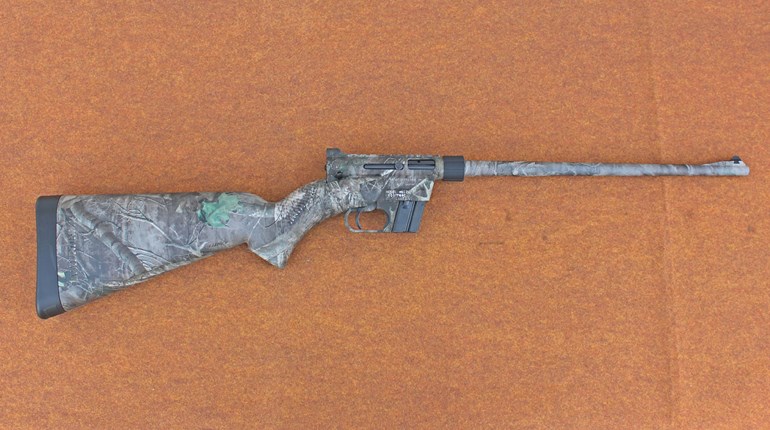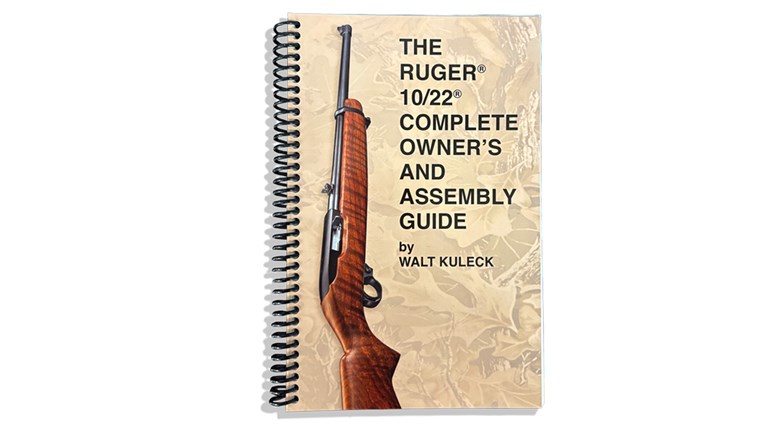
Among the highest priorities for handgun-hunting performance over the years has been boosting bullet energy levels. More power, please! Ever since the launch of impressive-for-its-time .357 Magnum in the 1935, gun and ammunition makers have been continuously tinkering away. The resulting revolver cartridges include the .41 Remington Magnum, .44 Magnum, .475 Linebaugh, .454 Casull and the .460 S&W, to name just a few. Along the way, some of the largest-framed revolvers on the market, such as the Magnum Research BFR, Freedom Arms Model 83 and the Smith & Wesson X Frame, are among the models that have been chambered in rifle calibers to offer even more bullet energy. For the most part, it seems like the revolver performance race topped out somewhere around 2003 with the release of the .500 S&W Magnum cartridge.

During the late 1990s and early 2000s, a couple of gun makers flirted with the idea of building a hunting revolver built primarily for bullet speed rather than raw foot-pounds of energy. They wanted to see just how fast a wheel gun bullet could go. One of them was Taurus. In 1999 the company launched the Raging Hornet, a beefy revolver chambered in the .22 Hornet rifle cartridge, which would remain in production until 2004. Freedom Arms also offered a .22 Hornet version of their Model 83 for a while.

These .22 Hornet revolvers proved to be impressively fast. However, these models did not pick up the speed they needed to remain in company catalogs and on dealers’ shelves. But at the end of 2023, Ruger decided it was time to revisit and revive the big but speedy revolver concept with the release of a new Super Redhawk configured for this caliber.

If you're scratching your head saying, "Wait a minute, the .22 what?," know that you're not alone. This somewhat obscure centerfire varmint rifle round was developed by American wildcatters in the 1920s and officially adopted by Winchester in 1930. Today's .22 Hornet cartridges are topped off with either .223- or .224-caliber bullets with common bullet weights of 35, 40 and 45 grains. These slim little bottleneck cartridges can push their bullets out of rifle-length barrels at manufacturer-listed velocities of around 2,400 to 3,100 fps for muzzle energies between 550 to 747 ft-lbs.

Shown here (from left to right) are the .22 LR, .22 WMR, FN 5.7x28mm, .22 Hornet and the .223 Remington. As you can see, it’s a fairly small cartridge with impressive performance numbers for a round developed nearly a century ago. With an effective rifle range of around 150 yards, the .22 Hornet's size, soft-shooting characteristics, centerfire primer reliability and accuracy potential have contributed to its use for small-game hunting, varminting, competition and as a survival rifle round. For those who want more information about this cartridge's history, take a look at Dave Campbell's American Rifleman article The .22 Hornet: History & Performance.

However, like many good middle-ground cartridges, it's just not as popular as the less-expensive rimfire .22 options, like .22 WMR, or the small-caliber rifle cartridges with greater range, like the .223 Rem. A quick look around the Internet's ammunition websites revealed listings for .22 Hornet ammunition made by Browning, Federal, Hornady, Nosler, PPU, Remington, Sellier & Bellot and Winchester with some companies offering multiple load options. However, the majority of these listings across multiple websites, at the time of this writing, were marked Out of Stock or Limited Availability. So, don't be too surprised if you have to look around to find factory fresh ammunition.
As a rimmed, centerfire cartridge with a nominal rim thickness of 0.065 inches and an overall length of 1.723 inches, it's a just-right fit for the Super Redhawk's frame size. Although most of the Super Redhawks have had six-round cylinder capacities, the .22 Hornet's cylinder and timing have been adjusted to accommodate eight-rounds. As you can see in the photo, this still leaves a good deal of metal in the cylinder.

The 9.5-inch long, cold-hammer-forged bull barrel features a recessed crown. And like the cylinder chambers, reducing the bore diameter from the .45-caliber range to .224-caliber leaves a good deal more steel in the barrel. The result is a revolver with a hefty unloaded listed weight of 66 ounces which increases to 73.5 ounces with the addition of an aluminum optics rail and a red-dot optic.
The all-stainless-steel, satin-finish Super Redhawk enjoys a reputation for being one of the strongest production double-action revolvers on the market. Built in Newport, N.H., it was originally designed to fire the .44 Mag. which operates at a SAAMI maximum pressure of 36,000 psi. Despite its svelte profile, the .22 Hornet cartridge can generate pressure levels of up to 44,000 psi which means this gun is not as overbuilt for this caliber as a first glance may imply.

The factory iron sights include a fixed front sight blade fitted with a green HIVIZ Shooting Systems fiber optic and a fully adjustable white outline rear sight. The squared-off frame shroud, which extends two inches out over the bull barrel, provides added strength at a key junction and provides enough metal for Ruger's patented milled-in scope ring mounting system. The Super Redhawks ship with a pair of one-inch stainless steel scope rings for magnified handgun scopes.

But these days compact, lightweight micro-red-dot optics are the popular option for handgun hunting. With this in mind, I took advantage of the integral frame mounting system to attach a 5.5-inch long Weigand Machine & Design WEIG-A-TINNY aluminum optics rail. Available in black, or the silver finish shown here, this particular rail model (SRHS454) can be used with all calibers of Super Redhawk including the .454 Casull. The trade off for the added rail strength is that the rear sight needs to be removed in order to install it. For those who plan to use one of these rails with only a .44 Mag. or this .22 Hornet version of the revolver, Weigand offers a version (SRH+) that allows the rear sight to remain in place. This rail was then used to mount a Leupold DeltaPoint Pro 2.5 MOA micro red-dot optic for the shooting range evaluation.

The un-fluted eight-shot cylinder is supported by a triple locking mechanism that secures it into the frame at the front, rear and bottom for a more positive chamber-to-barrel alignment. The cylinder notches are offset from the chambers for added strength. The cylinder release is of the Ruger GP100 push-button variety which is among the most intuitive designs to use. The exposed hammer features a checkered spur and an internal transfer-bar safety.
This gun's smooth-faced trigger is housed in a rounded trigger guard and exhibited a smooth double-action trigger pull of 11-pounds 6-ounces. Manually cocking the hammer for single-action fire produced a clean, short trigger pull of 3-pounds 14-ounces. This model ships with a pebble textured and finger grooved Hogue monogrip that is hand filling and comfortable to use.

At the shooting range, this revolver proved to be utterly reliable with the one Hornady load and the two Remington loads I was able to acquire. Being relatively hot rounds, I expected spent cartridge cases to be a bit sticky when extracting them. But they either dropped free from the cylinder or ejected with ease.
With this gun and ammunition combination couched in a bench rest, the shooting experience produced a smile-inducing dichotomy for me. On the one hand the report was loud—among the loudest revolvers I've worked with. Even with doubled-up hearing protection it sounded much more like a big-bore wheel gun than I would have expected. But on the other hand, the felt recoil was mild; exceptionally so. It was on par with a .22 LR or .22 Mag. semi-automatic pistol. In other words, all-day comfortable to shoot from a bench (or with a set of shooting sticks), as long as you've got your ears properly protected.

But if I had to pick a favorite feature of this unusual double-action revolver—the one that makes it well worth the investment—it would have to be the accuracy. When shooting bench-rested revolvers at 25-yards using iron sights, I look for 3- to 3.5-inch five-shot groups to show that the gun, the ammunition and the trigger tripper are all working within nominal operational specifications. Use of a red-dot optic can shave off as much as half an inch from the group sizes, and reducing the rounds from five to three should comfortably bring groups into the two- to three-inch range. But when the groups are better than this, I have to tip my hat to the gun and ammunition outshooting the shooter. In this case, the three-shot groups ranged from 0.84 to 1.48 inches with an average extreme spread of 1.09 inches.
Here is a full set of the rest of the range results, including bullet velocities measured for ten-rounds using a Garmin Xero C1 Pro chronograph.

These days it's not too uncommon to hear members of the shooting-sports community opine that the marketplace has become a somewhat bland and relatively monotonous sea of sameness bedecked with nothing but black plastic 9mm concealed-carry pistols and matte-black-anodized modern sporting rifles. Why can't the gun makers offer something really different to spice things up a bit?
With the release of the Ruger Super Redhawk chambered in .22 Hornet, I have to say this wish has been granted. It's a niche, old-school platform and classic rifle-cartridge combination that is accurate, enjoyable to shoot and a useful handgun-hunting option for varmints, prairie dogs and other small game. But cool combos like this one may not stay in the Ruger catalog forever (does anybody else remember the 10mm Auto version?). If this is the gun for you, don’t spend too much time deciding if you’ll buy it. Otherwise it might be another two decades before something like this comes along again.

Technical Specifications
- Type: double-action revolver
- Caliber: .22 Hornet
- Cylinder Capacity: 8 rounds
- Barrel: 9.5-inch bull barrel; stainless steel; recessed crown; shrouded ejector; 5-grooves; 1:9-inch RH twist
- Trigger: 3-pound 16-ounce (SA), 11-pound 6-ounce (DA) pull weight
- Sights: adjustable square notch rear; fixed HiViz fiber-optic front
- Grip/Stocks: pebbled black rubber Hogue monogrip
- Metal Finish: satin stainless steel
- Overall Length: 15-inches
- Weight: 66-ounces, unloaded
- MSRP: $1499; ruger.com



































